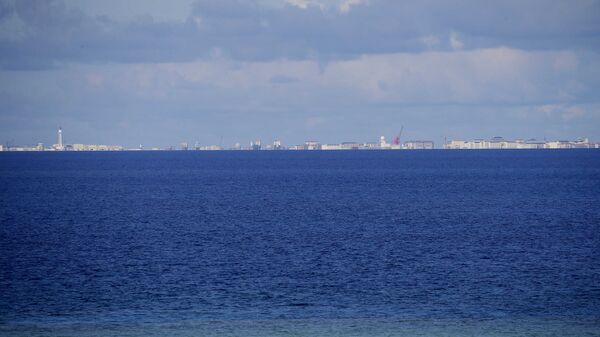China is planning for an intelligent, eco-friendly oceanic research system that covers the globe and can withstand all climates and water conditions.
This was explained by Huang Wei, a chief engineer at the China State Shipbuilding Corporation's (CSSC) Research Institute No.708, who spoke at an oceanic scientific vessel conference in Shanghai on Friday, as reported by the Science and Technology Daily.
China's future focus in research ship building is on a minimal number of crew numbers. In the area of automation and intelligence, it wants to match US counterparts' standards, and allow scientists to control the mission from an intelligent capsule, according to Wu Lixin, vice-principal of the Ocean University of China, as reported by the Shanghai Observer.
Wu also pointed out that ships of the future will have professional research teams on board to significantly save scientists from doing the physical labor by themselves as is the case currently.
Wu went on to say that Chinese research vessels really need to improve their safety since the West Pacific, a critical area for Chinese scientific research, has been experiencing stronger typhoons.
The Xuelong 2, China's first domestically-built polar research vessel, is an exemplar of China's future plans, experts have said, pointing to its length of 122.5 meters and beam of 22.3 meters, with a displacement of 13,990 tones and a navigational capability of 20,000 nautical miles. It will also be able to break polar ice with both its bow and stern, the Xinhua News Agency reported previously.
It comes with an intelligent capsule that can give the vessel a thorough examination. It is expected to take Chinese scientists to the north and south poles in 2019, and to be a leader in polar research, its chief designer Wu Gang, was quoted as saying in the Science and Technology Daily report.
There are now about 50 vessels qualified for oceanic survey and deep-sea scientific research in the world, according to Qu Tanzhou, head of the State Oceanic Administration's science and technology division.
Qu also noted that the number of Chinese research vessels and their quality still fail to meet the need to conduct marine surveys on a regular basis.
"From retrofitting to construction, Chinese research vessels are gradually improving and taking scientists to deeper seas and higher seas and the polar regions after 60 years of development," Huang was quoted as saying in the report.
China has the largest number of new oceanic research vessels in the world, with 10 in the design stage or under construction as of August, experts said at the conference.
This article was originally published in The Global Times.




